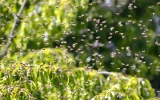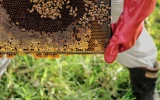What To Know When Moving Bees Short Distances
You may have seen several videos about moving bees from one place to another, and you may think that it's easy enough for anyone to do. If you're planning on moving your own bees from one place to another, here's what you should know.
To move bees short distances, you can either try moving them in small hops every single day until you reach the desired location, or you can move them in one big jump. Moving a beehive within 20 feet can be done incrementally. If your planned relocation is farther than this, safely divide the beehives before moving.
Plan your route ahead of time, taking into account any potential obstacles that could cause delays or stress to the bees. The bees' safety should be your priority, so make sure to choose a route that is the safest for them. Different measures are taken at each distance, and you should make sure to keep the process as stress-free as possible.
Summary
- Depending on how far you are planning to move your bees, each has different considerations.
- If you are moving your bees a short distance, such as 20 feet from their existing location, you can move them by doing it incrementally.
- If your planned relocation is farther than this, such as 50 feet, then safely dividing and moving the hives is recommended.
- When you’re ready to move your hives, do it in the evening, when the bees are less active.
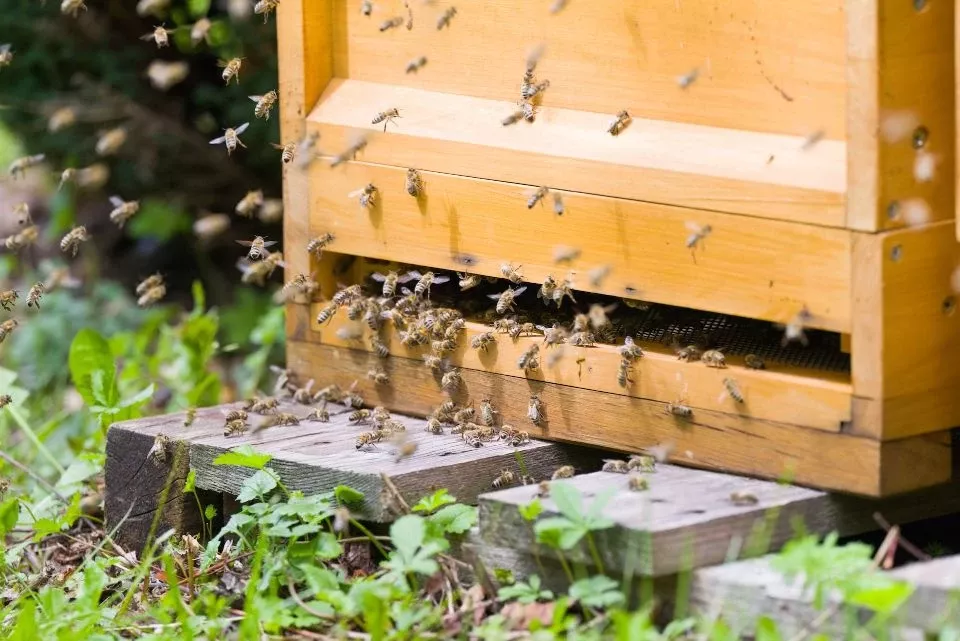
On this page:
How To Move A Beehive On Short Distances
When moving a beehive, you should make sure to keep the bees calm and in their hive. If you do this, they will be much less likely to swarm, which will make the moving process much easier. Here are a few tips for how to move a beehive:
Prepare ahead of time by taking the necessary precautions
Make sure to have a beekeeper suit, gloves, and a smoker handy, so you can properly protect yourself. This includes wearing gloves, a suit, and a smoker to reduce the risk of being stung.
Pack your beehive securely in a box or crate, so it stays in place during the move
Always transport your beehive to a cool, dry place, so it won't overheat or get too cold. Before moving, make sure to seal any holes, cracks, or gaps that may exist in the hive to prevent the bees from swarming.
Securely strap the boxes to prevent them from sliding or tipping
Even if you're planning on moving your hive a short distance, there's a possibility the boxes may slide or tip if you don't secure them. Use a strap to keep hold of the boxes and make sure they are held in place during transport.
Call a friend to help move the beehive
Moving a beehive by yourself may be difficult, so it's always best to call a friend or even an experienced beekeeper to help you out. With two people, it's much easier to move the hive and keep it secure during transport. Plus, the balance and weight of the boxes will be shared evenly between you.
Once you have reached the destination, unpack and install the hive
Once your hive is at its destination, unpack it and carefully install the hive in its new location. Remove all straps and obstacles that can stress the bees, and make sure to double-check for any cracks or holes.
Moving can be a stressful experience for bees, so make sure to take the necessary precautions. Moving your beehive short distances should be a breeze if you follow these instructions and plan ahead of time.
Moving A Beehive in 20 Feet
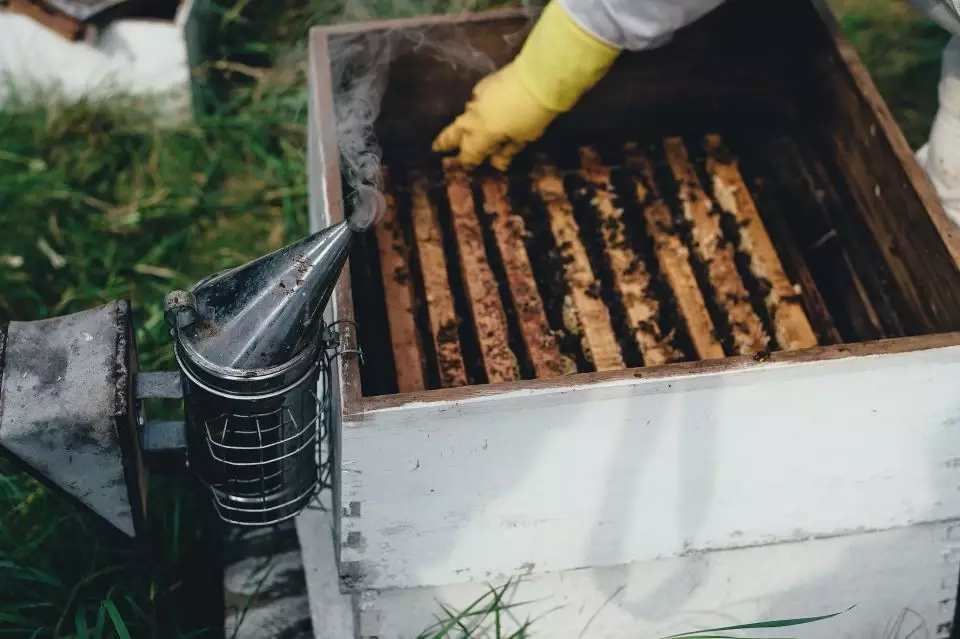
When it comes to moving a beehive within 20 feet, you should use the same methods as if you were relocating it to another location. However, there are a few specific things to keep in mind when moving a beehive over 20 feet.
Do it incrementally
It's ideal to move the bees in small groups so that they can adjust to the change quickly and avoid getting stressed out. Make sure to move the hive 5 feet every day until you reach your desired destination.
Move it during night or early morning
20 feet isn't that far away, but it's still better to move the bees when they are less active, like during the night or early morning. This will reduce the disturbance and help them adjust to the change quickly.
Securely strap the hive
It's important to secure the boxes with a strap, so they don't slide or tip during the move. However, unlike the common practice where we patch up all holes or exits, when moving within a 20-foot distance, there's no need to do so. This is because the bees won't be that far from their original hive, so they will be less likely to swarm or escape.
Let them familiarize with the new location
Once you have moved the bees to their new location, let them explore and become familiar with it. When moving them little by little away from their original location, there's a possibility that they would return; however, the moved hive is near, and they would notice it.
Therefore, it's important to keep them in the new location for a few days until they can make a decision. This will ensure that the bees don't return to their old hive. This will also ensure the bees make a new home in the new location.
Moving A Beehive in 50 Feet
Unlike moving a beehive hive less than 20 feet away, when it comes to relocating them 50 feet or more away, you should take extra precautionary measures.
Follow the common practice
When moving a hive 50 feet away or more, you should always follow common practice. Make sure to secure all exits with tape and strap the boxes with a strap to prevent them from sliding or tipping.
Call a professional beekeeper
It's always best to call an experienced beekeeper when relocating a beehive more than 50 feet away. If not, being with someone who also knows how to handle a beehive is highly recommended.
Add obstacles on their opening
The reason behind this is that once you've got your hive in the spot where you want them to be, having a branch in their entrance or hanging a towel will let them know that they are in a new environment. Therefore, give them the understanding that this is their new home.
It's normal for bees to be disoriented in their new hive and attempt to return to the old one. To prevent this, adding flashy colors to their hive will help them recognize their new home quickly.
These strategies can be useful; however, there are still other things that you can do. You can attempt to move them over long distances so that they can familiarize themselves with the new area, and also make sure to provide them with enough food and water so that they don't have to travel too far when they're hungry.
Moving A Beehive in Less Than 3 Miles
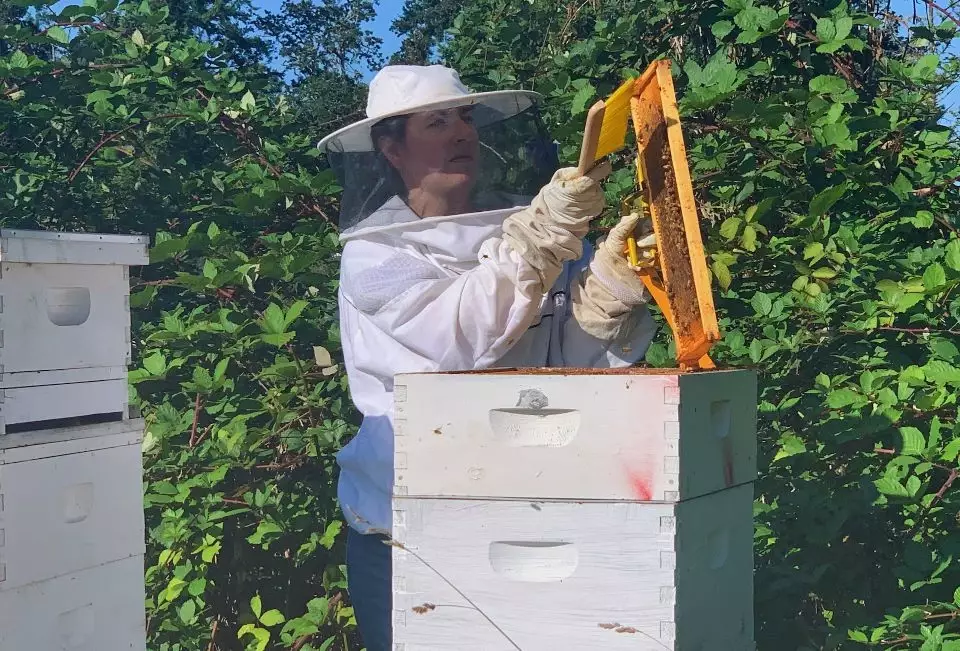
There's something called the "3-foot or 3-mile rule" when it comes to moving the hive. The bees are less likely to return if the hive is relocated 3 miles away from its original location.
A mix of both strategies is to be used in this situation. If you have a good enough truck or pickup, you can try to move the entire hive in one shot for longer distances, but it's still recommended to move them little by little until you reach the new location.
Put branches or obstacles in their opening
When you're done moving, it's important to add obstacles or branches to the entrance so that they can recognize their new home.
Move them at nighttime
Move the bees at night when it's dark, so the bees will be less likely to fly away and less active. Make sure that the temperature is cold enough so that they will likely keep themselves warm and not fly away.
Leave a box in the old location
There's a possibility that your bees may return to it, so leaving a box will provide them shelter. However, at the end of the day, make sure to shake them off or keep them in their new location.
These three tips may enable you to relocate your beehive in less than three miles. Some may say that it's harder, and some may say that it's easier, but with the right precautions and knowledge, you can make sure your bees settle into their new home without any troubles.
